Murano glass has a distinguished tradition and a lengthy, fascinating history. Since its inception, the working technique with glass has been acknowledged and respected as a distinctive art form.
Indisputably, Murano glass is a representation of elegance and beauty. It’s also one of the items that attract collectors the most.
However, the strategy used by the Venetian masters has grown to be so coveted that several copies have been made over time. So how can you tell if the glass is genuine Murano?
It takes considerable skill to recognize old artifacts, and Murano glass is no exception. This article will dwell more on the Identify and valuing vintage Murano glass. Read on.
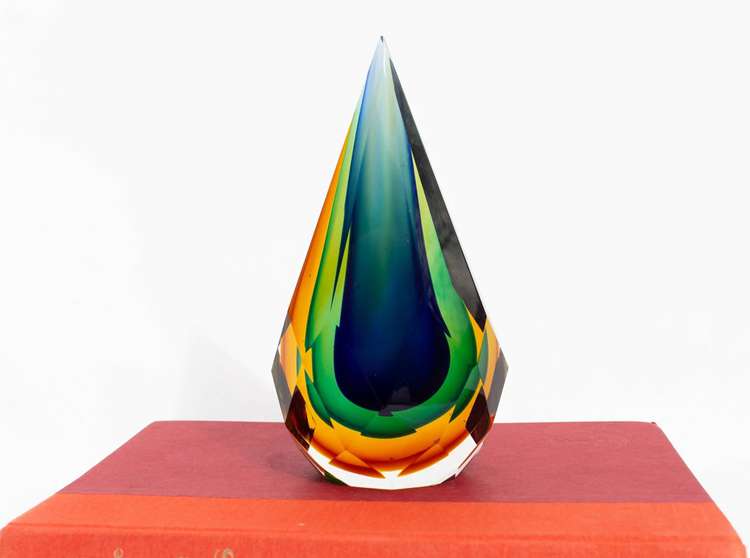
Table of Contents
What is Murano Glass?
When the crusaders of the fourth crusade besieged Constantinople at the beginning of the thirteenth century, everything started to happen.
To avoid damaging factory fires harming Venice, the mayor of Venice, Italy, ordered the relocation of all glass manufacturers to the island of Murano. Murano glass has since gained a reputation for being beautiful and colorful.
Many excellent glass artists were compelled to leave the city during the horrific pillage. Many of them settled in Italy, where over time, glassmakers in Italy rose to the status of professionals.
They acquired a wide variety of abilities, and when, two centuries later, a new influx of artisans migrated due to the Ottoman Empire capturing Constantinople, the movement grew even more.
The artisans had already organized and established a sizable guild in the 200 years since the first masters arrived in Venice. The most famous masterpieces were created in Venice Italian city, gaining prominence throughout time.
Due to the danger of fire in the manufacturing sector, all Venetian artisans went to Murano by the end of the 13th century.
This is how, through the years, Murano developed into a tiny nation of workers dedicated to blowing glass and producing magnificent pieces of art. Murano is famous for its vases, jewelry, decorations, sculptures, lamps, chandeliers, lamps, and lampshades, but they also produce a wide variety of other goods.
The privilege to carry swords was one of the benefits provided to Murano workers, in addition to immunity from prosecution. They also used to marry women from the wealthiest Italian families.
But the cost was steep. Due to a royal order, the glassmakers could not leave Murano Island. They protected their business by preventing other companies from stealing the technique.
Even though leaving Murano was illegal and may result in death, many artisans took the chance. They managed to leave, opening studios in neighboring nations and exporting Murano art across Europe.
However,
Murano is still home to expert artisans who are in charge of producing genuine Murano glass artwork. One of the oldest businesses in the world, Barovier & Toso, for instance, began producing Murano glass in 1295.
Popular Murano Glass Makers
Numerous gifted and creative glass artisans contributed to the development of Murano.
While some achieved fame years ago, others continue astounding the globe with their magnificent designs. Others have worked together to advance the glass-making sector and give it the international fame it currently enjoys.
But each of them has made a priceless contribution to the history and beauty of Murano, assuring enthusiasts and collectors with fresh concepts, audacious artistic expression, and appealing designs.
There were so many names involved in making Murano glasses. As a result, it may not be possible to outline the name of every artist. However, knowing some of the most popular makers of the Murano glass is a plus and can even aid in its identification.
Barovier&Toso
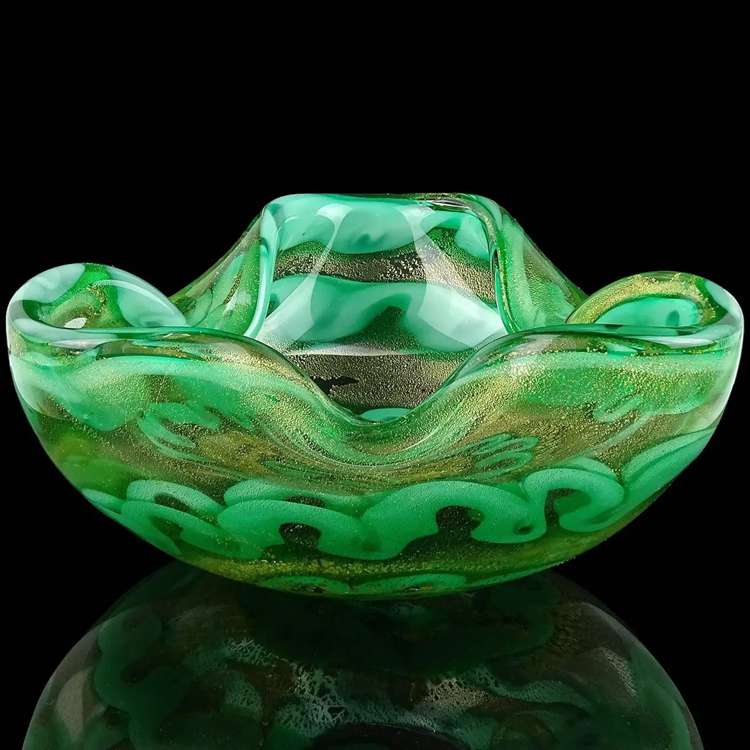
One of the earliest brands in Murano glass is Barovier & Toso, established in 1295. Barovier & Toso’s creations are one-of-a-kind works of art made of mouth-blown Venetian crystal by master artisans in Murano, keepers of a long-standing tradition that has been handed down through the generations.
A ground-breaking formula created by Angelo Barovier allowed for the creation of a material with previously unheard-of levels of extreme qualities.
The Palazzo Barovier & Toso in Murano, where the firm is best known for its opulent lighting, now exhibits its most refined pieces.
Venini
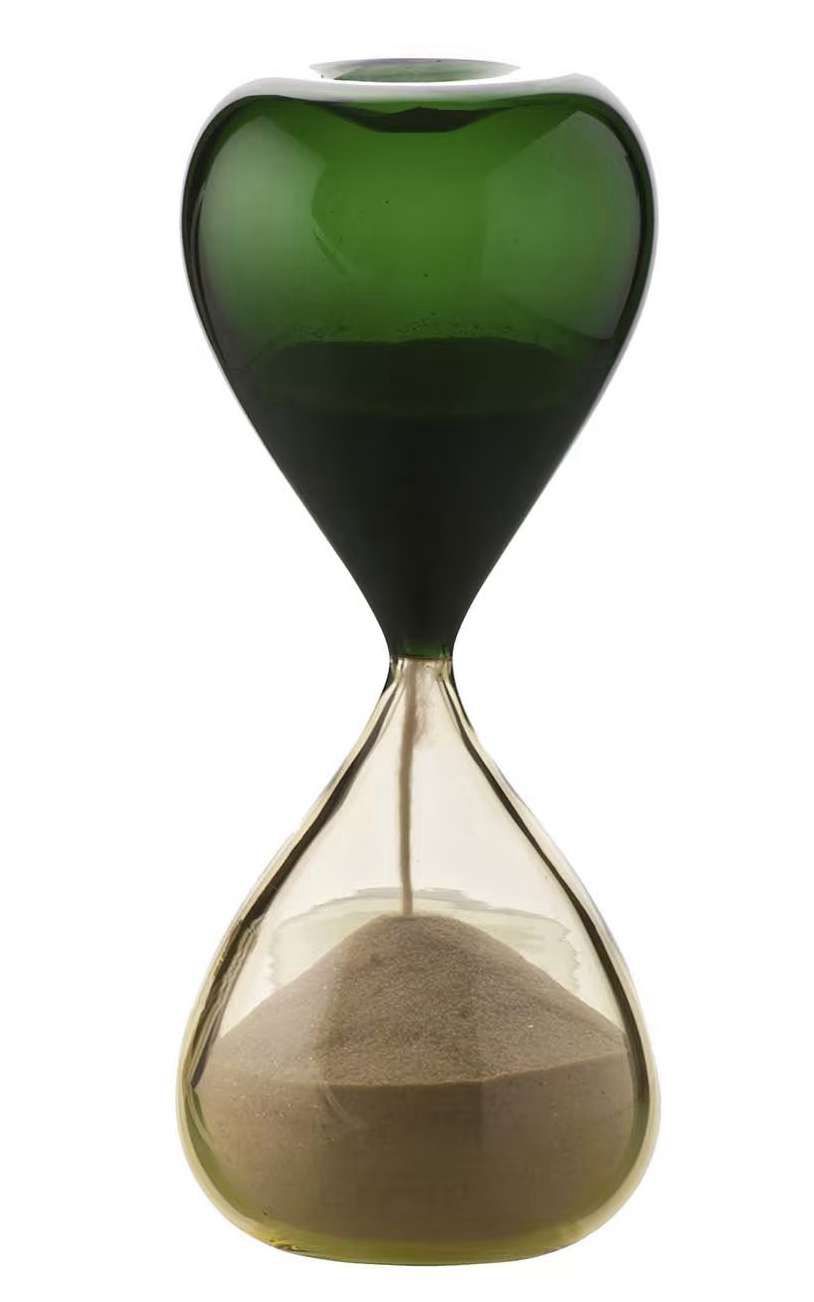
Since Murano has a long history of glass-making, it only seems reasonable that the best glass artisans would be responsible for creating these priceless and one-of-a-kind pieces.
Some of these tales are chock-full of shocking twists and turns, breathtaking beginnings, and evident triumph. This is the case with Venini, one of Italian history’s most accomplished and well-known glass artists.
Vetri Soffiati Cappellin Venini & C, the company’s original name, was founded in 1921 by Paolo Venini and Giacomo Cappellin. Soon after, artist Vittorio Zecchin joined.
This same year saw the creation of their famed Veronese vase, which became the brand’s emblem. Not a glass master by that name, Venini is a glass factory.
Seguso
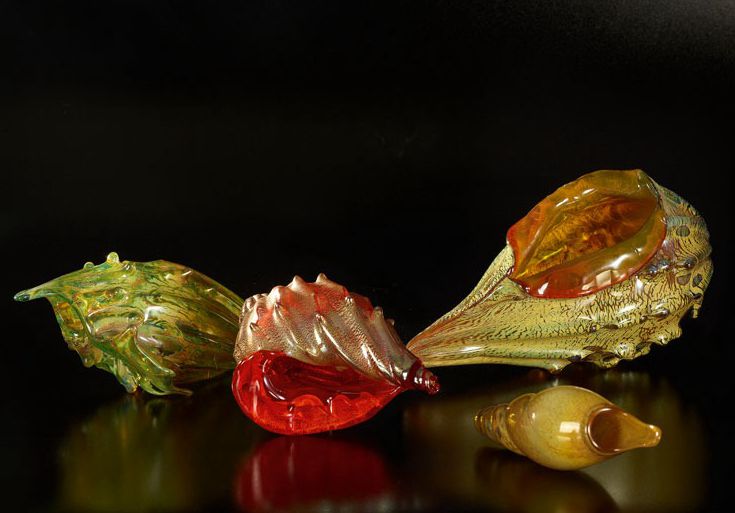
On the island of Murano, the Seguso family is among the oldest. Since 1397, they have been devoted to the art of Venetian glass.
They have also earned a reputation as leading specialists in producing works of art and décor with unique designs.
Seguso’s master glassmakers have produced works of art for dynasties in business and royal families worldwide.
Since Antonio Filux Segusi founded the company in 1397, it has passed through many leaders, and today it’s headed by brothers Gianluca and Pierpaolo Seguso.
Salviati
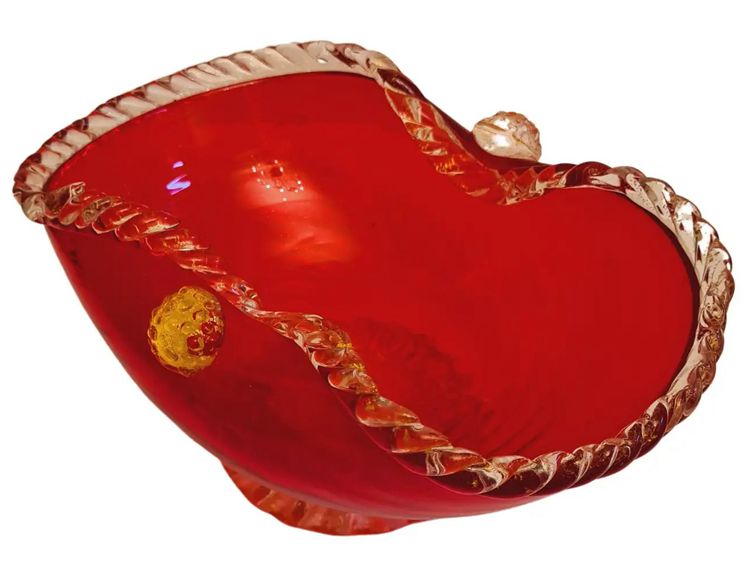
The Salviati family has carved out a unique and significant path in the history of Murano glassmakers because of their well-known appreciation for the picturesque Venetian Island of Murano and a persistent interest in innovation.
It has not been said that one must be born into the prestigious family of Murano glass artists to be a member. However, Salviati has demonstrated that this is true.
A Vicenza-born lawyer, Antonio Saviati established the Salviati company in 1859. They are renowned for their unique originality in the designs produced by numerous independent artists.
Alfredo Barbini
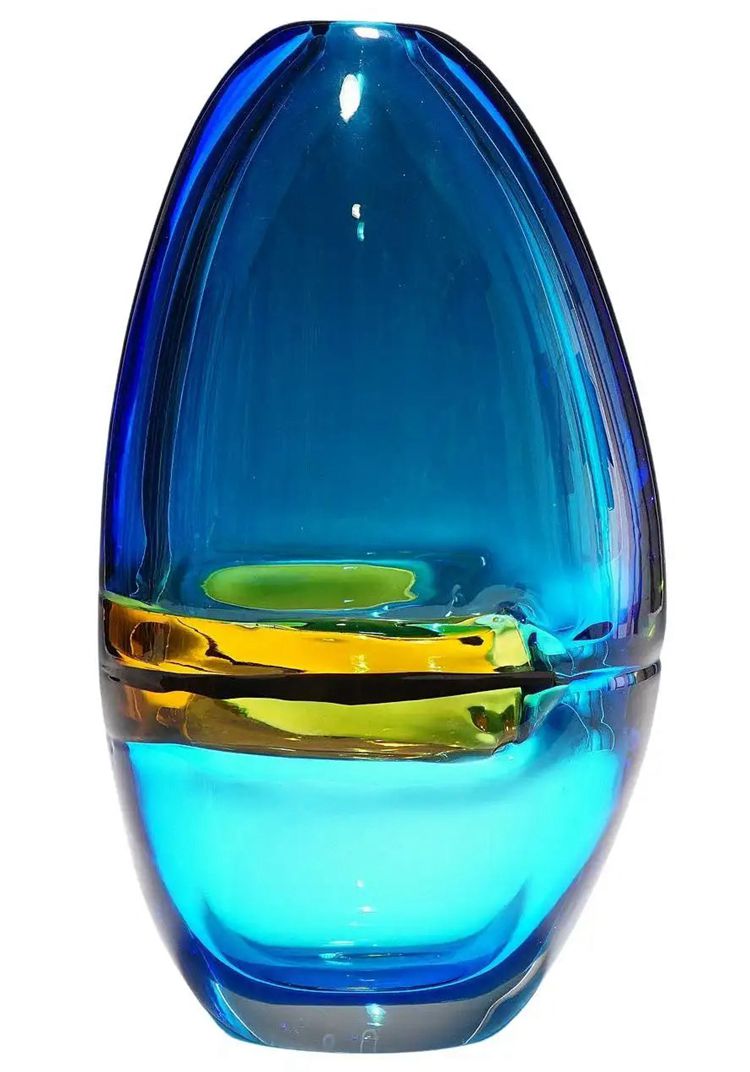
The Barbini family has a lengthy history. The family’s involvement in the Murano Glass business may date back to the 16th century.
It is when they had their name written in Venice’s Golden Book, a collection of the best Venetian noble families and glass artisans whose guild was granted special permission to be included in the Book.
For a long time, members of the Barbini family were involved in politics, business, and many aspects of glass manufacture.
Many of them achieved fame for producing exquisite Venetian mirrors, while others did so for producing enamel glass and yet others for creating imposing chandeliers.
How to Identify Murano Glass
How do you recognize genuine Murano glass? One can recognize a genuine piece of Murano glass can be in various ways.
First, Murano Island in Venice, Italy, is the only central home for producing Murano glass. As a result, it has unique characteristics, including vivid colors and irregular shapes.
To confirm authenticity, you must examine the colors, flaws, labels, store reputation, and seller’s understanding of Murano Glass.
These are yet another identifying marking that Venetian artisans have incorporated into their creations.
Identification through Colours
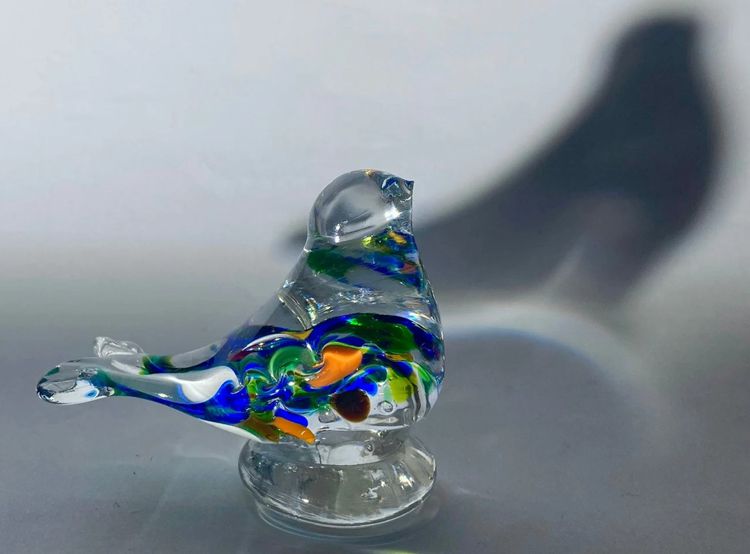
The glass mass is colored by the artists of Murano using a variety of minerals.
Transparent glass acquires unique hues due to the melting minerals in heated glass masses, such as blue from cobalt, scarlet from gold, green from iron, or pink from manganese.
In a method known as Sommerso, they often pile the colors on top of one another. In addition, the masters frequently add a layer of gold or silver sparkles inside the glass by adding thin sheets of gold or silver to the mass of the glass.
The ancient Roman method known as Millefiori or Murrina allows the glassmaker to produce objects that resemble a colorful quilt of mosaic-like pieces as a spectacular demonstration of their mastery.
Therefore, an original vintage Murano glass artwork will always have multiple color layers that are layered and some gold or silver decoration.
Identification through Imperfections in the Shape
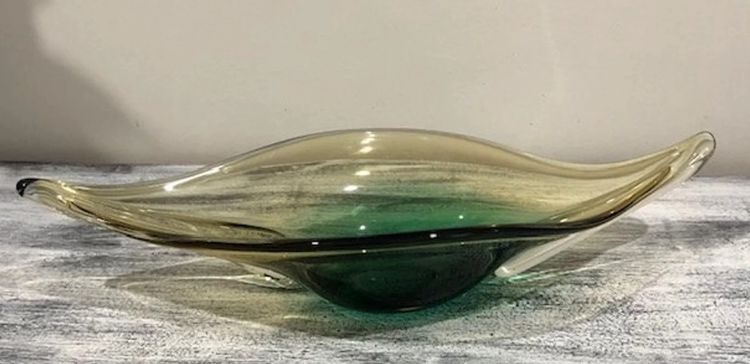
To achieve ideal shapes and gloss, masters of Murano Glass do not employ precise measurements or devices.
Because of this, most Murano Glass pieces might be slightly crooked, have bottoms with rough pontil markings from where they removed the glass piece from the stick, and occasionally have bubbles trapped inside the glass.
The shape, size, color, tint, and pattern of two products from the exact model may vary.
This is the outcome of a very manual, age-old process where the masters take pride in using just the most basic tools and carrying on the methods and traditions of their forefathers without using measuring instruments or contemporary technologies.
Authentic Vendors Know Authentic Murano Glass
Suppose a store, whether physical or online, sells massive, beautiful, colorful vases, figurines, and extravagant, typically Venetian items like gondolas, lovers, Moores, clowns, Millefiori glassware, as well as elaborate Venetian chandeliers. In that case, this store likely carries authentic Murano Glass from a group of notable skilled geniuses and factories.
Talk to the vendor or get in touch with them by phone, email, chat, or other means if you’re unsure and having trouble deciding whether to buy.
Question them about Murano and Venice and inquire about the artwork, its technique, and the glass-making process.
It’s possible they don’t sell genuine Murano glass if they don’t know anything about the item and can’t discuss it in detail. The likelihood of the store selling genuine, authentic Murano glass increases if it is transparent about its purchasing procedure.
You can also know if the vendor can respond to your inquiries cordially and politely, providing thorough information on their products and manufacturing methods.
The Price Should Help You Identify
Keep in mind that Murano glass is a high-end work of art and not a widespread item. Therefore, if you find a considerably cheaper piece than the others, it is almost certainly a fake.
Murano masters use their fathers’ traditional techniques to preserve and produce masterpieces.
Artisans regularly use gold and silver threads in their works of art, making it a difficult and time-consuming task. As a result, they are not cheap, and the price will always give you a good idea of whether you are dealing with an authentic vintage Murano glass.
Reach Out to the Original Craftsmen
Times have advanced, and technology is available to everyone. So utilize technology to get in touch with Murano-based masters and workshops to ask questions about Murano glass.
Remember that we no longer live in the middle ages, and the island’s artisans are no longer imprisoned there, so they are more accessible.
The experts in this field will be able to respond to all of your inquiries regarding the items they have created. In addition, they are pretty knowledgeable about the process and can assist you in determining whether the artwork you already own or wish to purchase is genuinely a Murano.
Murano Glass Identification Marks
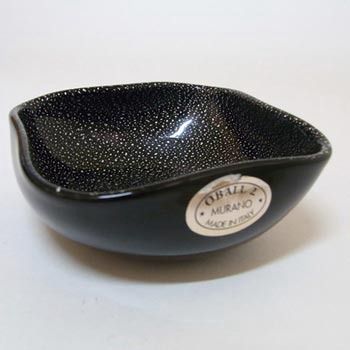
The good thing about this pricey item is its long history of fame, and its master artisans are world-class creators. Great care has been taken to give each piece so many distinctive features.
You can recognize a genuine Murano work of art by the unique markers that the great artists of Murano have left behind over the years as they have battled counterfeiters.
For this reason, anyone knowledgeable about the subject can distinguish genuine Murano glass from counterfeit ones. But that is not enough.
Some specific cues might help you figure out whether or not you are dealing with an authentic piece of art, whether you are new to this or just want to learn more about Murano glass markings.
Trade Marks Labels
To confirm that the sellers you want to buy from are authorized Venetian glass exporters, look for a trademark label.
For instance, Promoveto, a significant consortium, grants these certificates to all workshops that satisfy the criteria for being recognized as legitimate Murano Glass manufacturers.
The difficulty with contemporary art has vanished. Most products are controlled, and the originals typically carry a digital code that may play a role in confirming their authenticity.
You will be able to learn all the information you require about your piece, including the oven it came from and what manufacturing procedures it underwent if the marks on your Murano pieces are authentic.
Certificates of Authenticity
Counterfeits did not just creep in just yesterday; for ages, imitations have been a challenge for the makers of Murano glass. For this reason, many people decide to provide an authenticity certificate with each piece.
A genuine certificate of authenticity will mention the piece’s origins, some Italian text, and occasionally the method used to create it.
Engravings on the Glass
Most of Murano’s art has labels etched into the glass. The use of artist names and diamond-cut signatures is common.
Even if a sticker or label shows the inscriptions “made in Murano.” don’t take it for granted because there are many counterfeit labels on the market. Stickers and labels are not always reliable.
Keep in mind that numerous businesses try to replicate Murano glass, and there are incredible imitations that are obvious to any professional yet go unnoticed by untrained eyes.
Most Murano art pieces have labels carved directly into the glass. Artist names are regularly used, and signatures are frequently diamond cut.
Look for the name of the factory or the artist who created it if you come across a label that says it’s from Murano; most labels provide this information.
These scripts are also marked “Vetro Eseguito Secondo La Tecnica Dei Maestri Di Murano” on a sticker. That indicates that, while using a technique similar to Murano’s, it is not a genuine Murano.
Additionally, it must also carry the ” made in Murano.” Although that may not be a clear-cut means of authentication, it can serve in the process. Some labels, which are definitely fake, simply state Italy rather than Murano.
Also, note that engravings with the inscription “Murano Style” fall far from being original Murano glass.
A label that reads “Vetro Artistico Murano” is also quite likely to be a fake. The reason is that the label serves as a mark of validity, yet obtaining one requires payment. As a result, many imitators merely pay a membership fee to obtain the seal, even if it does not mean they are marketing real Murano glass.
Many websites have a sizable collection of images with authentic labels verifying the authenticity of objects made in Murano. Also, check out their photo banks because they have a vast collection and can help you spot fakes.
Vintage Murano Glass Value Guide
Prices for Murano glass vary according to the size and sophistication of the artwork, but if you’re considering buying a piece, you should be prepared to spend at least a few hundred to a thousand dollars.
A knockoff will be anything that is much less expensive than the price of the original.
So, is Murano Glass worth anything? Is that Murano glass object my grandma left me unique? You might be wondering. According to appraisals, many genuine Murano Glass pieces are worth hundreds or even thousands of dollars.
It can be either a highly valued exceptional work of art or a priceless antique, depending on who made them, when, what technique was employed, and how rare a piece is.
Why then is Murano Glass expensive? And from where does its worth derive? The following are the primary factors that influence a Murano Glass piece’s value:
The Condition and Age of the Glass
Murano glass is a kind of art; like other works of art, its pieces appreciate through time. Consequently, each era of Murano glass-making has its allure.
The pieces from Venice’s 16th, 17th, 18th, and 19th centuries that have survived are its most priceless ones; many are housed in museums, while others are meticulously preserved in private collections.
The 20th century has more readily accessible art, with the majority of the Murano Art Glass legacy from this century being mid-century pieces.
Genuinely priceless mid-century and other vintage Murano Glass masterpieces are available at competitive prices from specialized antique internet marketplaces, auction houses, and genuine Murano Glass vendors.
The Method and Craftsmanship
Some Murano glass-making techniques are complicated to master and call for extraordinary dexterity and artistic flair.
The rarest and most valuable Murano Glass techniques, Filigrana, Reticello, and Zanfirico, involve heating, stretching, and twisting glass canes into intricate lace-like patterns.
Another one is millefiori, or murrine in Italian, where small glass cane pieces with motifs are fused to create patterns resembling quilts.
The Master of the Glasswork itself
Due to the unique creative value of their creations, many masters of Murano glass achieved an international reputation.
Numerous more well-known Venetian glass artisans are also on this list, such as Fulvio Bianconi, Carlo Scarpa, Vittorio Zecchin, Lino Tagliapetra, Paolo Venini, and Alfredo Barbini.
On the antique market, their works attract high values and top prices.
Also those stamped with the stamps of the most prestigious Murano Glass enterprises, like Barovier and Toso, Fratelli Toso, Venini, Moretti, Formia, Gambaro e Poggi, Seguso, and Salviati.
The Source Material
Metals like cobalt, silver, or gold must be used to create specific colors. For example, Murano glass is frequently with 24-carat gold or sterling silver to give the pieces a unique oop.
The prices of priceless and semi-priceless metals are high and steadily rising. As a result, it affects the values of Murano glass and where to Buy Murano glasses.
Where to Buy Murano Glass
It is advised that you buy from a reliable retailer. The main outlets for Murano glass sales are museums, specialty shops, and licensed exporters.
Additionally, bear in mind that the products are probably genuine if the shop offers a sizable collection of traditional Murano artwork.
If you decide to purchase online, ensure the vendor has the original certificates for the item.
Keep in mind that the glass manufacturers are always located on Murano Island. Those that don’t operate exclusively out of Italy frequently sell knockoffs.
Final Thoughts
We trust that this piece has clarified any queries you may have had regarding how to recognize genuine Murano glass.
You now have a better knowledge of how to differentiate Murano’s work based on its attributes, and we were able to widen your awareness of original marks and labels.
Don’t hesitate to drop them in the comment section if you have further information on Murano glass.





![Where To Sell Antique Furniture In 2022 [Ultimate Guide]](https://www.jacquelinestallone.com/wp-content/uploads/2022/09/Etsy-Your-Place-To-Buy-And-Sell-All-Things-Handmade-600x450.jpg)


